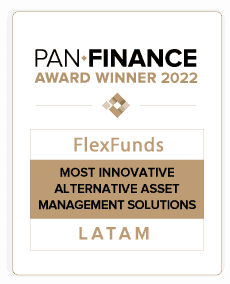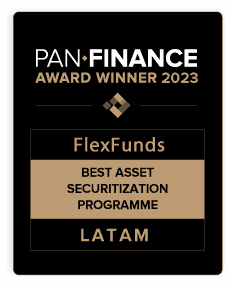- This article details the benefits of FlexFunds’ FlexPortfolio compared to alternatives such as actively managed certificates (AMC).
- The information is primarily aimed at asset managers and advisors looking for solutions to distribute their investment strategies more easily and at lower costs.
- At FlexFunds, we offer an asset securitization program to issue exchange-traded products (ETP) in less than half the time and cost of other existing market alternatives. For more information, please feel free to contact our team of experts.
The global asset management industry is growing rapidly. In fact, according to a PwC study, assets under management (AuM) are expected to grow at a rate of 6.2% annually, reaching USD 145.4 trillion by 2025.
A significant part of this expansion could be linked to new and innovative investment distribution solutions like FlexFunds’ FlexPortfolio, which offers several benefits over actively managed certificates (AMC).
What is FlexPortfolio?
FlexPortfolio is an investment vehicle that allows the securitization of a wide range of listed assets. It offers simplified turnkey solutions for investment advisors to create their own investment vehicle (ETP).
Through FlexPortfolio, exchange-traded products (ETP) can be created on liquid assets such as stocks, bonds, options, futures, currencies, and exchange-traded funds.
Currently, FlexPortfolio consists of four solutions called “Flex”:
- FlexPortfolio: Creates unregulated ETPs, allowing the securitization of a strategy with listed assets in a custodial account at Bank of New York or Interactive Brokers.
- Flex Open Portfolio: Securitizes a portfolio of listed assets in a preferred custodial account.
- FlexRegulated Portfolio: A regulated investment vehicle by the Central Bank of Ireland that securitizes listed assets within an Interactive Brokers account, aimed at institutional and retail investors.
- Flex Dual Portfolio: Securitizes a portfolio of listed assets within accounts at both Interactive Brokers and Bank of New York.
Benefits of FlexPortfolio over AMCs
FlexPortfolio solutions offer multiple advantages compared to actively managed certificates (AMCs):
Ease of distribution
With Flex, investors can access complete investment strategies on liquid assets directly from their brokerage accounts, as they are “Euroclearable,” allowing for global distribution.
In contrast, AMCs often have lower liquidity, as their shares cannot always be easily bought and sold.
Flexibility
FlexPortfolio by FlexFunds allows the securitization of multiple liquid assets, including all types of stocks, public or private bonds, many financial derivatives, and exchange-traded funds (ETFs).
Management capacity
There are virtually no restrictions on the rebalancing or trading of the underlying account of the FlexPortfolio. In other words, the asset manager can execute all transactions directly in the brokerage account without third-party involvement.
Secure issuance
Another benefit of the Flex is its high issuance security. The strategy is backed by liquid underlying assets and is entirely independent of the promoter’s activities. However, with AMCs, the issuer may appoint a third party.
Competitive costs
The FlexPortfolio may have no setup or maintenance costs, making it a cost-efficient investment vehicle. On the other hand, for actively managed certificates, costs tend to be higher.
Fast launch
A Flex takes 8 to 12 weeks to be launched to the market, depending on the chosen solution. In comparison, other investment vehicles may require a launch time of more than six months.
How to securitize liquid assets with FlexFunds
To access FlexPortfolio and its many advantages over AMCs, follow these five steps:
Step 1: Personalized study and ETP design
Since the securitization process can cover a wide range of assets of different types (both listed on secondary markets and private), it is necessary to analyze each case and offer a tailor-made solution.
Step 2: Due diligence and signing of the engagement letter
Once the product structure is defined, the risk committee conducts a study and evaluation of the case.
Afterward, the engagement letter is signed, specifying the terms and conditions of the service and the scope of FlexFunds’ functions.
Step 3: ETP structuring and document review
During the securitization structure, it is necessary to work closely with the client for the proper development of the required documentation that will shape the ETP. This step also includes onboarding the portfolio manager.
Step 4: ETP Issuance and Listing
Asset securitization is now a reality. At this point, your investment strategy is packaged into an ETP. It is now necessary to list it and generate an ISIN/CUSIP to facilitate distribution.
The issuer of the securities is a special-purpose Irish company (SPV) created for such purposes. The issuance is backed by the investment strategy itself, acting as collateral.
Step 5: The ETP is ready for trading via Euroclear
The asset securitization process concludes with the issuance and listing of the ETP, meaning it is ready for distribution.
Our key differentiator is coordinating an asset securitization program quickly and efficiently, overseeing all phases of the process from start to finish to provide a turnkey solution for our clients.
For more information about our securitization solutions, feel free to visit our FlexPortfolio section and schedule a meeting with our experts.







